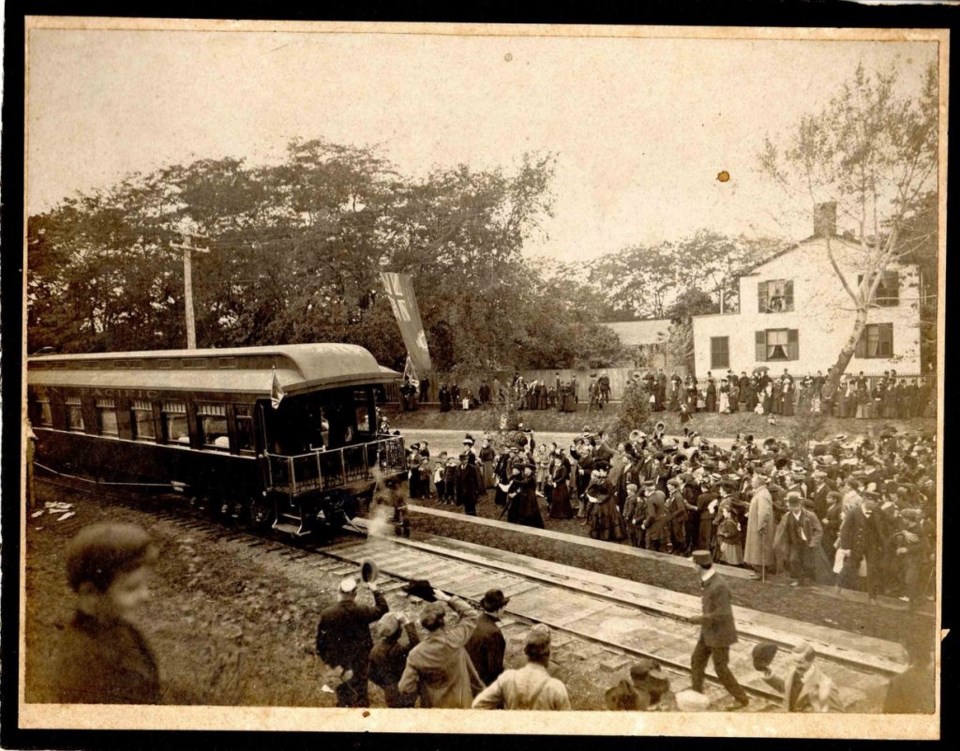
Explore Niagara railway history with the Niagara-on-the-Lake Museum’s next instalment of their Virtual Lecture Series presented by local author Peter Mulcaster.
This 1854 to 1959 history seemed to have been somewhat neglected until Mulcaster came to town. Originally from the UK, he began his career as a professional engineer in the automotive industry. After immigrating to Canada in 1966, he eventually moved to Toronto where he spent the majority of his career in the IT industry. After his retirement, Mulcaster chose to spend the next chapter of his life in NOTL. Unbeknownst to him at the time, this move would inspire him to write some chapters of his own.
“I was very interested in local history. the 1812-14 war, and the importance of the town in the early days of Upper Canada. The role it played was significant,” he said. His interest in the history of the area led him to do some independent research into the town, and during that time, “I suddenly came across an old photo that showed railway trains running through the centre of the town, and I wondered what that was about. There didn’t seem to be anything that was written up on that. With my background as an engineer, I’m interested in transportation, so I thought I’d start researching it.”
Three years of researching later, this project resulted in a book, Off to Paradise Grove: A Railway History of Niagara-on-the-Lake 1854-1959. “It’s a little bit of history which was there, but it’s been largely forgotten, because if you look around town, unless you really know what you’re looking for, there’s absolutely very, very few signs that there was ever a railway coming through the town,” Mulcaster explains.
He acknowledges the many contributors to the final result. He expresses his gratitude to the staff of the NOTL Museum, specifically Shawna Butts, Sarah Kaufman and Amy Klassen for their assistance. He also recognizes the contributions of maps, photographs and information that were supplied to him by the Canadian Railroad Historical Association - Niagara Division, of which Mulcaster is an active member. “I also got a lot of help from the local residents that helped me put together the book. It was a very collaborative effort. A lot of people in the town gave me photographs that I could use in the book.”
All of the research, the photographs, the maps and the information, draw our attention to over a century of railway dominance that has almost been forgotten. In his lecture, Mulcaster will highlight the socio-economic impact the railway had on the area. He will describe the state of the art technology of electric and steam engines and how engineering challenges, such as the escarpment and the Niagara River, were overcome by would-be railroad entrepreneurs. Railway service meant connection, progress and prosperity.
And hopefully, railway service could mean those things again. When asked how he felt about the increase of GO Train service to the Niagara Region, Mulcaster said, “I think it’s excellent. I think it’s a very good step.” He continued, “We need these kinds of interurban networks. They are very, very predominant in Europe and I think it’s going to be part of the solution to solve the environmental problems that we are starting to face. We have to start changing the way we use transportation.”
He acknowledges that smaller and isolated towns, like Queenston and Virgil, still lack public transport but he remains optimistic that increased train service to the area could bring increased connection, progress and prosperity just as it did almost a century ago.
His virtual lecture is Nov. 17, at 11 a.m., and will require registration through Zoom. To access the registration link, go to www.notlmuseum.ca. For more information, please contact Amy Klassen: ww.aklassen@nhsm, or call 905-468-3912.


